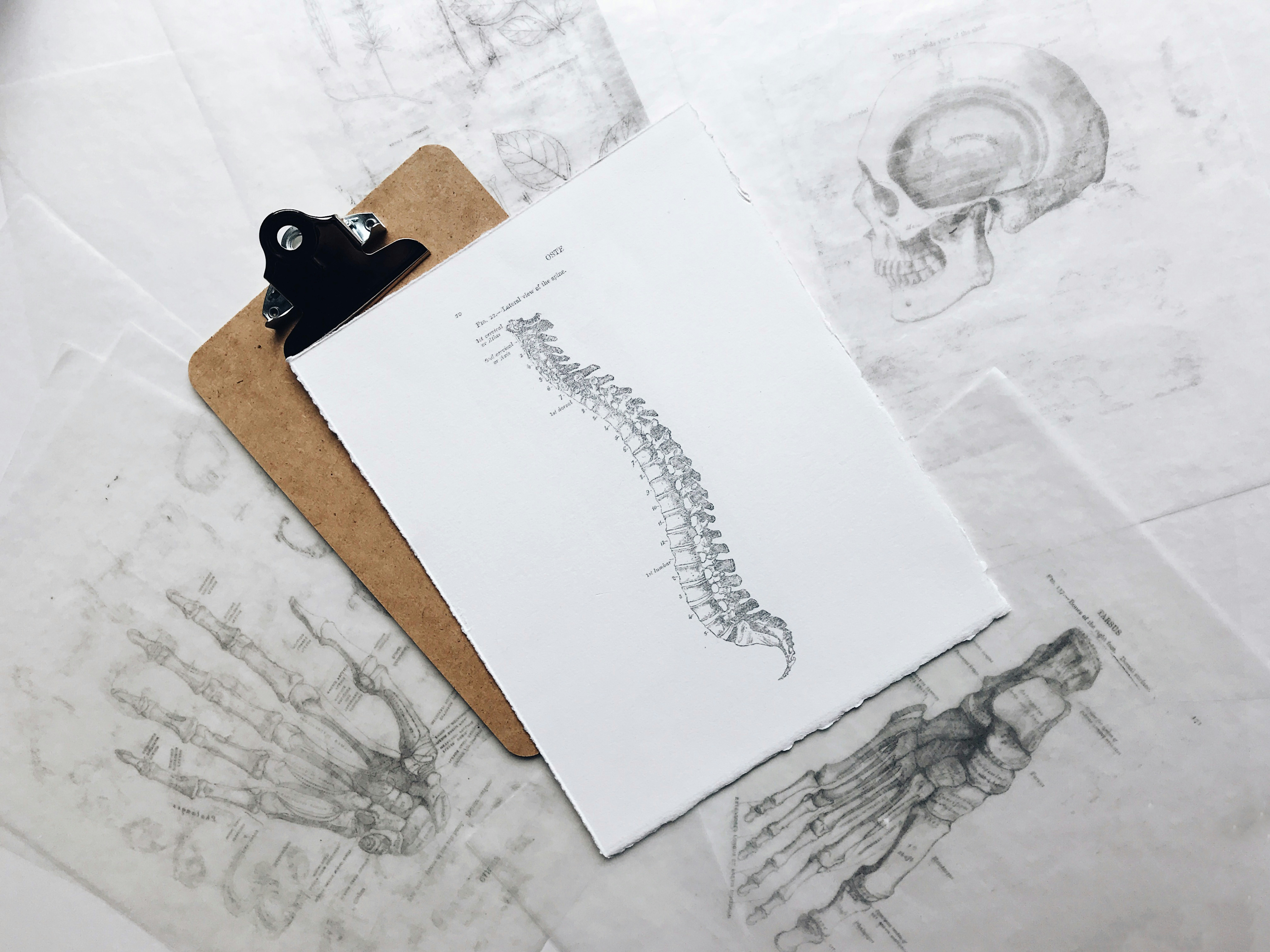Boost Joint Mobility and Ease Pain With Chiropractic Care
Are you struggling with stiff joints and persistent discomfort? You're not alone—many people face these challenges daily. In this article, you will learn how chiropractic care boosts joint mobility and eases pain through targeted adjustments and holistic wellness strategies. We will explore the impact of regular chiropractic visits on joint health and address common misconceptions about chiropractic methods. By reading this content, you will gain insights into how to improve your mobility and find relief from discomfort, enhancing your overall quality of life.
Understanding Joint Mobility and Discomfort

Joint mobility refers to the range of motion in your joints, which is essential for everyday activities. When you experience discomfort or pain, it can significantly impact your accessibility to movement and overall quality of life. Conducting a safety and health assessment can help determine the underlying causes of these issues. This limitation often affects how well you can sleep and engage in daily tasks. Visiting kik chiropractic may provide relief and improve your joint mobility.
Many patients struggle with joint stiffness and discomfort, which can stem from poor ergonomics in your work and home environments. Suboptimal posture and repetitive movements can create tension and misalignments in your body, leading to pain. Understanding these factors is key to restoring mobility and alleviating discomfort.
Chiropractic care focuses on identifying and addressing the underlying causes of joint pain. By enhancing joint mobility, treatments can help reduce discomfort, making it easier for you to move freely. This improvement not only boosts your physical health but also enhances your overall well-being, allowing you to enjoy life more fully.
Joint mobility affects how you move every day. Chiropractic care can help you move freely again.
How Chiropractic Care Enhances Joint Mobility

Chiropractic care plays a vital role in pain management by enhancing joint mobility through various techniques. You’ll learn how specific adjustments can positively influence the central nervous system and spinal cord, improving your overall quality of life. Understanding these techniques and their effect on spinal alignment will help you appreciate how they combat disease and alleviate discomfort.
Mechanisms Behind Chiropractic Adjustments
Chiropractic adjustments work by applying precise pressure to specific joints, relieving tension that contributes to stiffness and discomfort. This targeted approach helps restore proper joint function and increases the range of motion by reducing stress on the surrounding tissues and cellular structures. As tension decreases, you may notice significant improvements in mobility, allowing you to engage in your daily activities with greater ease and comfort.
Specific Techniques Used for Joint Mobility
To enhance your joint mobility, health professionals often utilize specific techniques like spinal adjustments, which relieve pressure on the joints. By applying gentle traction, they create space within the joints, allowing for improved range of motion and reducing discomfort associated with injuries. Understanding how these methods work can empower you to take control of your well-being and help you engage in daily activities with ease.
The Role of Spinal Alignment in Mobility Improvement
Spinal alignment plays a critical role in enhancing your mobility and overall well-being. When your spine is properly aligned, it reduces inflammation by allowing the nervous system to function optimally, which in turn can help improve your range of motion. Moreover, incorporating heat therapy alongside chiropractic adjustments can facilitate relaxation of tense muscles, further promoting flexibility and comfort during movement.
With better joint mobility comes the promise of ease and comfort in everyday movements. This leads us to explore how chiropractic methods can bring relief from joint discomfort, allowing you to reclaim your physical freedom.
Relief From Joint Discomfort Through Chiropractic Methods
Understanding the common causes of joint pain is the first step toward effective relief. Chiropractic manipulation offers a targeted approach to alleviate discomfort by addressing misalignments and tension in the body. Complementary therapies, such as ultrasound, can further support pain management. A thorough evaluation of your medical history will help create a personalized plan to enhance mobility and reduce wear and tear on your joints.
Identifying Common Causes of Joint Pain
Identifying the common causes of joint pain is essential in your journey toward healing. Issues such as poor posture, repetitive movements, and injuries can lead to stiffness and reduced flexibility, particularly in areas like your shoulder. By recognizing these contributing factors, you can take proactive steps, such as incorporating targeted stretching and therapy, to alleviate discomfort and enhance your range of motion.
Chiropractic Manipulation and Pain Relief
Chiropractic manipulation is an effective method for addressing joint pain and improving overall mobility. By applying targeted pressure to restore proper alignment, you can experience a noticeable reduction in discomfort resulting from injuries, scar tissue, or cartilage damage. The frequency of your chiropractic visits can also play a significant role in enhancing the efficacy of these treatments, helping you regain movement and live a more active lifestyle.
Complementary Therapies to Support Pain Management
Complementary therapies play a significant role in your pain management journey, especially when addressing issues related to limb and hip discomfort. Techniques such as ultrasound therapy can assist in easing muscle tension and enhancing biomechanics, which contribute to improved joint mobility. Alongside spinal manipulation, these supportive therapies create a comprehensive approach to relieving pain and restoring optimal function, enabling you to regain control of your activities with greater ease.
Pain can fade with skilled hands, but the journey doesn’t end there. Regular visits to your chiropractor can build a stronger foundation for lasting joint health.
The Impact of Regular Chiropractic Visits on Joint Health
Regular chiropractic visits can significantly impact your joint health by improving mobility and reducing pain. You’ll learn about the frequency and duration of treatments necessary for optimal results, the long-term benefits of ongoing chiropractic care, and hear patient success stories that highlight improvements, particularly in knee health. Understanding the relationship between manual therapy and synovial fluid production will also be discussed, providing a well-rounded approach to your wellness journey.
Frequency and Duration of Treatments
The frequency and duration of your chiropractic visits play a crucial role in enhancing joint mobility and alleviating discomfort. Regular sessions can provide ongoing stimulation to your nervous system, which helps your brain communicate effectively with your body, particularly in areas affected by conditions like bursitis and neck pain. A consistent treatment schedule, combined with a balanced diet, can support long-term joint health, ensuring that you experience significant improvements in mobility and overall well-being.
Long-Term Benefits of Ongoing Chiropractic Care
Ongoing chiropractic care offers numerous long-term benefits that can positively impact your lifestyle. Regular visits help improve your posture, reducing back pain and enhancing overall mobility, enabling you to participate more fully in daily activities. Collaborating with your primary care physician and incorporating chiropractic adjustments can also be an effective strategy for managing personal injuries and preventing future discomfort, ultimately supporting your journey toward better health.
Patient Success Stories Demonstrating Improvement
Many patients have shared their success stories about how regular chiropractic visits have transformed their joint health. For instance, one individual experienced a significant reduction in stress and discomfort after incorporating myofascial release techniques into their treatment plan. By effectively managing nerve tension and improving energy flow, this patient was able to regain mobility and enjoy daily activities with less weight on their joints and more ease in movement.
Regular chiropractic care not only improves joint health but also lays the groundwork for recovery. As you consider how these visits aid injury rehabilitation, the true value of chiropractic care comes into focus.
Exploring the Role of Chiropractic Care in Rehabilitation

Integrating chiropractic care with other therapeutic practices enhances your rehabilitation experience, focusing on joint mobilization and relaxation techniques. Tailored rehabilitation programs support your recovery by assessing safety and health, ensuring your immune system is robust. You’ll also discover effective strategies for post-injury recovery that prioritize safety while promoting optimal healing and mobility.
Integrating Chiropractic With Other Therapeutic Practices
Integrating chiropractic care with other therapeutic practices can create a powerful synergy that enhances your recovery process. When you combine chiropractic adjustments with soft tissue therapies such as massage, you can effectively target the fascia and alleviate tension, which may contribute to issues like headaches or joint discomfort. This comprehensive approach not only helps you regain mobility but also minimizes the need for more invasive options like surgery, ultimately supporting your overall well-being.
Rehabilitation Programs Tailored to Enhance Mobility
Rehabilitation programs tailored to enhance mobility focus on addressing specific needs, such as improving motion in the ankle or other joints. By utilizing targeted chiropractic services, you can engage in personalized exercises that not only relieve pain but also strengthen the surrounding muscles and tissues. Collaborating with a primary care provider ensures a comprehensive approach that supports your recovery and optimizes joint function, allowing you to regain your active lifestyle with greater ease.
Strategies for Post-Injury Recovery
After an injury, following effective strategies can aid your recovery process and restore optimal joint function. Incorporating techniques like acupuncture may help relieve tension in ligaments and nearby muscles, enhancing circulation and promoting healing. Additionally, working closely with your chiropractor to design a tailored rehabilitation plan can ensure you engage in safe exercises that improve mobility while reducing the risk of re-injury.
Rehabilitation through chiropractic care opens doors to newfound strength and movement. As you embark on this journey, finding the right chiropractor for your specific joint needs can make all the difference.
Choosing the Right Chiropractor for Joint Mobility Needs
When seeking chiropractic care for joint mobility, knowing what to look for in a specialist is key. You’ll want to consider questions to ask during initial consultations, such as their experience and treatment approaches. Additionally, assessing treatment plans can help ensure they are tailored to improve your joint mobility while addressing your unique needs effectively.
What to Look for in a Chiropractic Specialist
When selecting a chiropractic specialist, consider their expertise in treating joint mobility issues and their approach to patient care. Look for professionals who prioritize thorough evaluations to understand your specific needs and pain points, as this personalized approach is crucial for effective treatment. You should feel comfortable discussing your concerns, so finding a chiropractor who communicates clearly and empathetically can significantly enhance your healing journey.
Questions to Ask During Initial Consultations
During your initial consultation with a chiropractor, it's beneficial to ask specific questions to gauge their approach and expertise in enhancing joint mobility. Inquire about their experience with the techniques designed to alleviate your specific discomfort and how they tailor treatments to meet individual needs. Additionally, don't hesitate to discuss the expected duration of care and what outcomes you can realistically anticipate, as this will help you feel more informed and empowered on your journey to improved mobility and pain relief.
Assessing Treatment Plans for Joint Mobility Improvement
When evaluating treatment plans aimed at enhancing joint mobility, focus on how chiropractic care is personalized to meet your specific needs. A good chiropractor will conduct a thorough assessment of your joint condition and discuss the most effective techniques, ensuring that each session targets areas where you experience discomfort or reduced movement. By examining your progress regularly and adapting the treatment plan as needed, you and your chiropractor can work together to achieve the best possible outcome for your joint health.
Choosing the right chiropractor can lead to greater freedom of movement, yet many still harbor doubts. Let’s clear up those misconceptions about chiropractic care that keep people from finding relief.
Addressing Misconceptions About Chiropractic Care
Many individuals hold common myths about chiropractic treatment, often questioning its safety and effectiveness. This section will clarify these misconceptions while highlighting real patient experiences and outcomes. By understanding how chiropractic methods can enhance joint mobility and ease pain, you’ll gain valuable insights to make informed decisions about your health and well-being.
Common Myths Surrounding Chiropractic Treatment

Many misconceptions surrounding chiropractic care can create unnecessary apprehension about seeking treatment. For instance, some people believe that chiropractic adjustments are only for back pain, overlooking the significant benefits for joint mobility and overall well-being. By understanding that chiropractors employ a variety of techniques to address joint issues, you can feel more confident in the potential for pain relief and improved movement.
Another common myth is that chiropractic adjustments are unsafe or can cause injury. In reality, when performed by trained professionals, these treatments are not only safe but also effective in alleviating discomfort. Knowing that thousands of patients regularly experience enhanced joint mobility and relief from pain can empower you to explore chiropractic care as a viable option for your health journey.
Lastly, some individuals believe that chiropractic care requires long-term commitment or frequent visits without immediate results. It's important to recognize that treatment plans can be personalized to fit your specific needs, and many patients notice improvements after just a few sessions. Understanding this can help you view chiropractic care as a proactive approach to enhance your mobility and ease pain, leading to a better quality of life.
Clarifying the Safety and Effectiveness of Chiropractic Methods
Chiropractic methods are both safe and effective for enhancing joint mobility and relieving pain. Many studies have shown that patients experience significant improvements in their physical health following chiropractic care, often noticing reduced discomfort after just a few sessions. By working with a qualified chiropractor, you can trust that treatments are tailored to your specific needs, prioritizing your comfort and safety while promoting better joint function.
Understanding Patient Experiences and Outcomes
Understanding patient experiences can help dispel common doubts about chiropractic care. Many individuals like you have shared stories of experiencing significant improvements in joint mobility and pain relief after only a few sessions. By learning how treatment plans are tailored to meet unique needs, you can feel reassured about the effectiveness of chiropractic care in enhancing your overall well-being.
Conclusion
Chiropractic care is essential for improving joint mobility and alleviating pain, enabling you to engage in daily activities with greater ease. By addressing misalignments and tension in your body, chiropractic adjustments stimulate your nervous system and promote optimal function. Regular visits not only enhance your mobility but also support long-term joint health, contributing to a better quality of life. Prioritizing this form of care empowers you to take control of your well-being and enjoy the active lifestyle you deserve.
